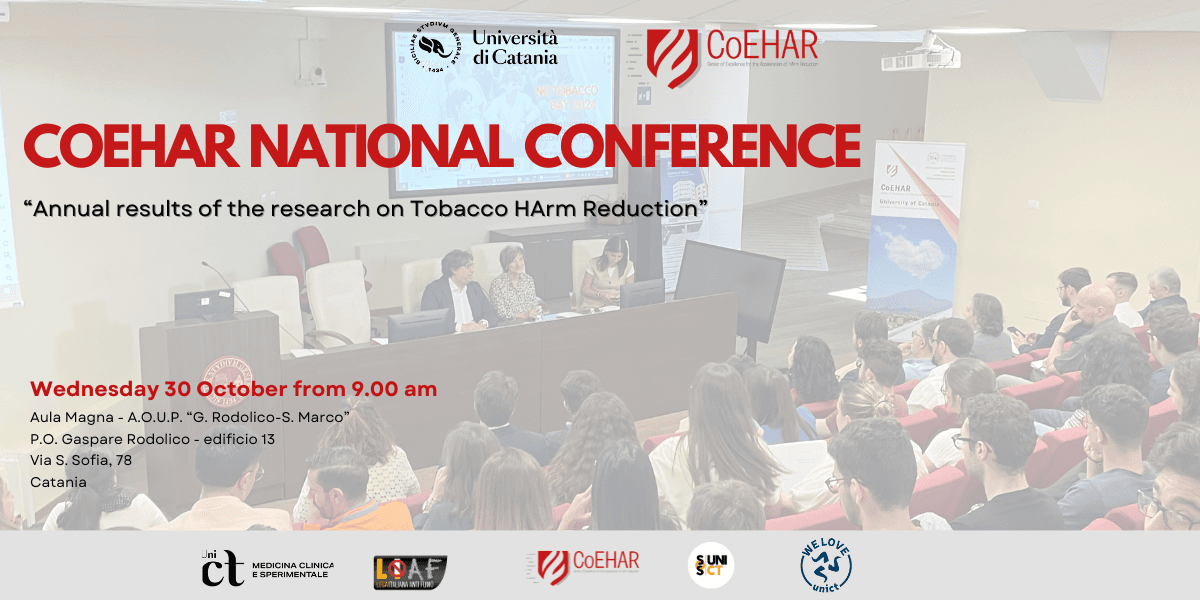New indicators specifically designed to establish the harm reduction potential of low risk tobacco products are examined by CoEHAR, with promising results.
Catania, 20 September 2021- The international scientific scene is constantly enriched by new evidence and scientific studies that confirm the positive health effects for smokers who can’t quit and decide to switch to vaping products.
Data that come from many scientific researches on smokers who switch from cigarette to combustion-free products (such as vaping products or heated tobacco products) show significant improvements not only in terms of overall quality of life, but also for clinical parameters of a variety of diseases, such as diabetes, hypertension, obesity, COPD and asthma.
However, tobacco harm reduction theories and their fundamental principles are questioned worldwide.
It is intuitive that combustion free strategies translate into significant health improvements, as reasonably expected considering the chemical composition of cigarette smoke and the pathogenesis of smoking-related disease (connected to the tar and not to nicotine).
The problem is how to quantify them and the time that occurs to develop such an evaluation.
In an article published by the prestigious international journal “Internal and Emergency Medicine”, the Founder of the CoEHAR, Prof. Riccardo Polosa, stressed the need of refraiming health effects indicators that are commonly used for efficient substantiation of smoking cessation and tobacco harm reduction/harm reversal.
Link: https://link.springer.com/article/10.1007%2Fs11739-021-02837-2
The paper carefully examines a clinical study conducted in England on a large samples of smokers. Nathan Gale et al., using data collected from 332 subjects between baseline and day 180, found that switching to heated tobacco products not only reduced exposure to cigarette smoke toxicants, but also improved several biomarkers of potential harm when compared to continuing to smoke.
Although the transition from conventional cigarette to combustion-free products chosen for the study was complete, improvements were modest and with no clinical impact.
“It is not surprising that there was no clinical impact– stated Polosa- When quitting smoking, health indicators may improve, but if the change is evaluated with low-susceptible and clinically significant endpoints- such as in Gale et al. study- the change may be gradual and may take years to become clinically relevant”.
The paper signed by Polosa is the first in its kind to highlight the possibility to use new clinical and functional indicators to measure and assess once for all the harm reduction potential of combustion free products in research studies.
“At the University of Catania’s Center of Excellence for the Acceleration of Harm Reduction (CoEHAR), researchers are carefully examining a number of relatively unexplored indicators of health effects for the best possible detection of biological/physiological changes associated with stopping smoking. Results are promising and supportive of harm reduction theories. Health improvements across the board!” concluded Polosa.





